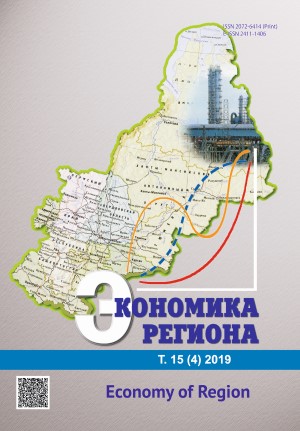ВЛИЯНИЕ МЕЖДУНАРОДНОЙ И ВНУТРЕННЕЙ МИГРАЦИИ НА РАСПРОСТРАНЕНИЕ НЕКОТОРЫХ ИНФЕКЦИОННЫХ ЗАБОЛЕВАНИЙ И НАРКОМАНИИ В РЕГИОНАХ РФ
The Impact of the External and Internal Migration on the Prevalence of Some Infectious Diseases and Drug Addiction in the Russian Regions
Author(s): Marina Lazarevna Lifshits, Natalya Pavlovna NeklyudovaSubject(s): Economy
Published by: Институт экономики Уральского отделения Российской академии наук
Keywords: migration; infectious diseases; drug addiction; regions of Russia; HIV; tuberculosis; syphilis; viral hepatitis; econometric analysis; course of disease
Summary/Abstract: Russia ranks third in the world after the United States of America and Germany by the number of migrants. Migrants bring health risks for the population of host territories. Combined with social factors, this fact differently impacts the indicators of public health. The paper aims to assess the possible impact of various aspects of the internal and external migration in the Russian regions on the prevalence of the socially dangerous diseases: HIV, active tuberculosis, syphilis, drug addiction, acute and chronic viral hepatitis B and C. Correlation and econometric analysis are the main research methods. The main research methods we use are correlation and econometric analysis. We constructed panel models for each of the considered diseases. The models test various socio-economic indicators (including money income, housing improvements, population’s education level, and the incidence of alcoholism), as well as climatic, geographical and demographic indicators. Moreover, we tested various indicators characterizing labour immigration, migrants’ inflow to the region from other countries and other regions, and a share of people born outside the region in resident population. Additionally, we considered the impact of morbidity rate and proximity of some countries’ borders. We tried to track the changes of the factors influencing spread of diseases as time passes. As a result, we established a positive significant statistical correlation of the following indicators of migration and incidence: 1) employment of foreign citizens and incidence of syphilis in 2005; 2) share of internal migrants in the population and incidence of drug addiction in 2005; 3) employment of foreign citizens and incidence of drug addiction in the period from 2006 to 2016; 4) inflow of foreign citizens and detection of chronic viral hepatitis in 2010; 5) inflow of foreigners and incidence of acute viral hepatitis C in the period from 2011 to 2016. The obtained results can be useful for experts and researchers interested in the issues of regulating and optimising the region’s socio-economic policy and medical and demographic processes.
Journal: Экономика региона
- Issue Year: 15/2019
- Issue No: 4
- Page Range: 1184-1198
- Page Count: 14
- Language: Russian

